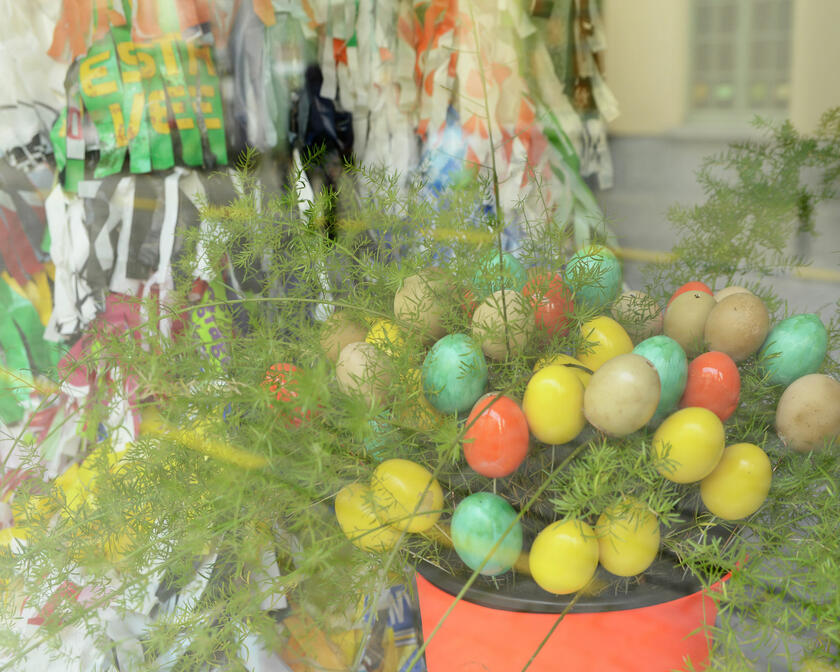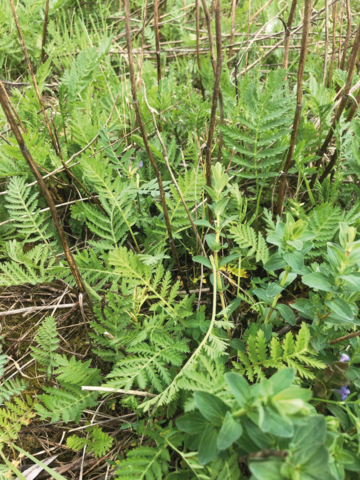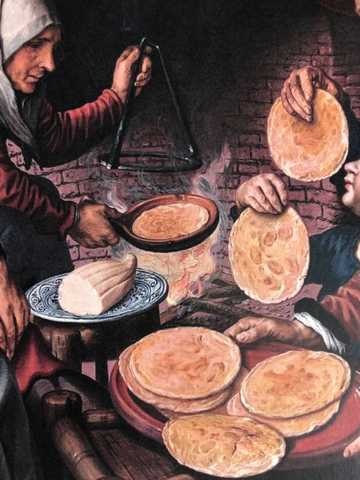
The healing powers of tansy
The ancient seasonal turning point of the resurrection of nature reached a climax in medieval Ghent during the solemnity of Easter. Anything that should not or could not have been eaten for 40 days found its way back to the dinner table. Fresh egg cakes baked in a richly buttered frying pan were on the festive menu.
Reinvaert was added to the batter. Reinvaert is the dutch medieval name for tansy. The young sprouts of this strong-smelling and bitter-tasting herb grew in gardens or were picked in the wild. The spiced egg cake dispelled the monotonous taste of the fast from the mouths of our medieval ancestors.
The oldest recipes for tansy cake are from English cookbooks dating back to the 1430s. Jan van Eyck must have tasted this popular delicacy.
Did you know that tansy also had a symbolic meaning? Immortalized on the Ghent Altarpiece, the devil-repelling reputation of the strongly fragrant plant was emphasized. After all, it was thought that the devil hated strongly fragrant plants and their preparations.
In a society where illness and death lurked around the corner, tansy cake also had a medicinal effect. Tansy would not only solve digestive problems, it was also considered to be an excellent folk remedy for the outbreak of respiratory infections.
The recipe is not very complex and from a contemporary point of view could be labeled as a simple thick omelet with garden herbs. In the eyes of the fasting medievalist, this was a dish that was mouth-watering.

Get started
Spiced egg cakes

Ingredients for 2 egg cakes:
- 4 eggs
- 30ml cream
- lump of butter
- handful of fresh garden herbs (e.g. chervil, dill, purslane, etc.)
- Some young sprouts of tansy and dandelion leaf*
- pinch of black pepper, nutmeg and ginger powder
- mix the eggs with the cream
- ground half of the fresh herbs
- finely chop the other half of the herbs
- add herbs and spices to the batter
- bake the egg cakes golden brown on both sides in a buttered frying pan
- The cakes were served in the 15th century with meat, so you can add bacon at will.
Later recipes also mention breadcrumbs, which makes it a full-fletched cake. To mask the bitter taste of the wild herbs, sugar was also added and the cake was finally topped with citrus juice.
*get well informed before you pick these plants yourself in the wild